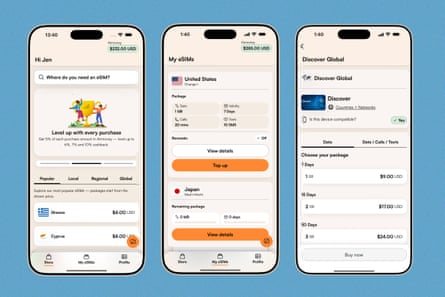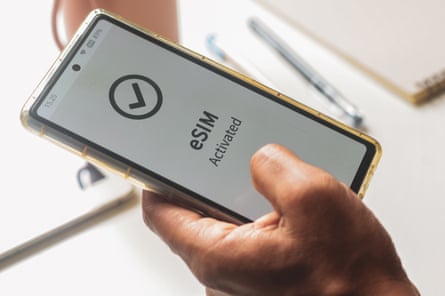On a week-long trip to Paris last year, I racked up nearly $100 in data charges on my iPhone, with taxes and fees. Ditto for a separate, eight-day trip to Spain, which was even more pricey. And, in what I now jokingly call an act of piracy, my three-week trip to seven countries – including a seven-day cruise – cost me over $300 for data.
I (eventually) learned my lesson, and a little research yielded a simple solution that can make life a lot easier: Switching to a local carrier for your travels. This used to entail a visit to an airport kiosk or a mobile store to get a fingernail-sized plastic SIM chip installed in your phone, but a new feature called an eSIM lets you handle it all from your phone before you even leave. My eSim for Paris cost $11 for 5GB of data, plenty for checking emails, using Google Maps, and browsing social media (although I was careful not to upload photos until I had wifi access). In Spain, I spent $10 for 5GB.
Here’s how it works, and how to use it on your next trip abroad.
How eSims work

I got burned by roaming charges, which occur when you use cellular data outside of your home country. You can easily turn off roaming before you travel, but then you’ll only be able to text and surf on wifi.
An eSim is a temporary electronic add-on to your phone that lets you buy affordable short-term cell coverage on local carriers when you travel. You can buy individual eSim for each country from local carriers like Vodafone in the UK or Telcel in Mexico, but it’s much easier to use one of the new crop of apps that do all the heavy lifting for you.

Three popular companies that offer eSims for international travel are Airalo (which I have used, and who provided some useful information for this article), Saily and Holafly. All three cover most popular destinations, and vary for more obscure locations. I recently traveled to Bhutan, for instance, and only Airalo had coverage there. Saily can sometimes be marginally cheaper than the others, but it’s worth checking all three. Holafly offers unlimited data only, so it’s a bit more expensive if you don’t need that.
Most phones newer than about 2021 accept eSims, but if you’re not sure, Airalo maintains a compatibility list that makes it easy to check. You will also need to ensure your phone is unlocked, which typically means you’re not making payments on it to your carrier. In the event you are, most carriers will unlock it when the phone is paid off, either automatically, online, or with a phone call.
Setup and picking a plan

Installing your eSim varies a bit depending on the provider, but they all make it easy: Just download the app and follow the instructions. It isn’t difficult, but there are a few steps involved, and you’re better off doing it before you leave for your trip. All of the providers listed offer support if you get into trouble, either on the website or through the app.
Since most eSims only provide data and not voice service, you’ll need to use WhatsApp or other apps to make calls. If you do need a local number, Airalo has a package called Discovery+ that allows you to make voice calls and is available in more than 130 destinations.
How much data should you get? If you’re only going to check email, send a few texts a day, and do light web browsing and social media, 3GB to 5GB should be enough for a week trip. The 5GB plan I purchased for six days in Spain was more than enough. But I used wifi when downloading photos or streaming, and didn’t make any calls. If you intend to stream videos, peruse Instagram and make video calls, you might need closer to 10GB. If you game online, need video conferencing for work, download a lot of large photos and stream in HD, you could need even more.
Once you’re all loaded up you can head out on your next adventure without worrying – well, at least not about your phone!

 3 months ago
56
3 months ago
56

















































